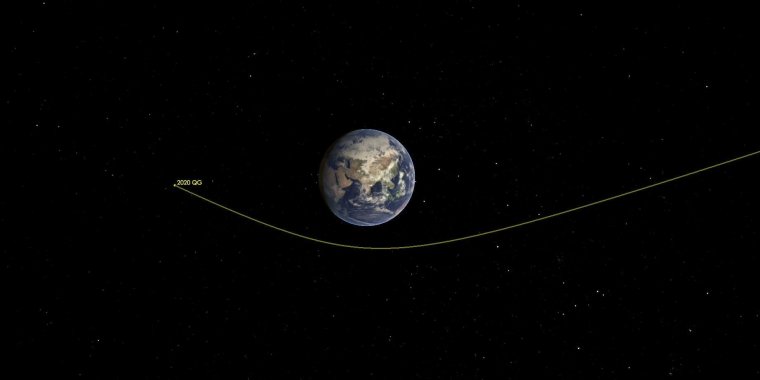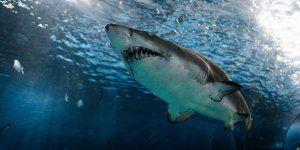| News / Science News |
Tiny Asteroid Buzzes by Earth - the Closest Flyby on Record
Near Earth Asteroids, or NEAs, pass by our home planet all the time. But an SUV-size asteroid set the record this past weekend for coming closer to Earth than any other known NEA: It passed 1,830 miles (2,950 kilometers) above the southern Indian Ocean on Sunday, Aug. 16 at 12:08 a.m. EDT (Saturday, Aug. 15 at 9:08 p.m. PDT).

This illustration shows asteroid 2020 QG's trajectory bending during its close approach to Earth. The asteroid is the closest known nonimpacting asteroid ever detected. Photo: NASA/JPL-Caltech
At roughly 10 to 20 feet (3 to 6 meters) across, asteroid 2020 QG is very small by asteroid standards: If it had actually been on an impact trajectory, it would likely have become a fireball as it broke up in Earth's atmosphere, which happens several times a year.
By some estimates, there are hundreds of millions of small asteroids the size of 2020 QG, but they are extremely hard to discover until they get very close to Earth. The vast majority of NEAs pass by safely at much greater distances - usually much farther away than the Moon.
Zipping along at almost 8 miles per second (12.3 kilometers per second) - a little slower than average, Chodas noted - 2020 QG was first recorded as just a long streak in a wide-field camera image taken by the Zwicky Transient Facility.
The image was taken six hours after the closest point of approach as the asteroid was heading away from Earth.
Asteroid 2020 QG enters the record books as the closest known nonimpacting asteroid; many very small asteroids impact our planet every year, but only a few have actually been detected in space a few hours before impacting Earth.
On average, an asteroid the size of 2020 QG passes this closely only a few times a year. (NASA)
YOU MAY ALSO LIKE





